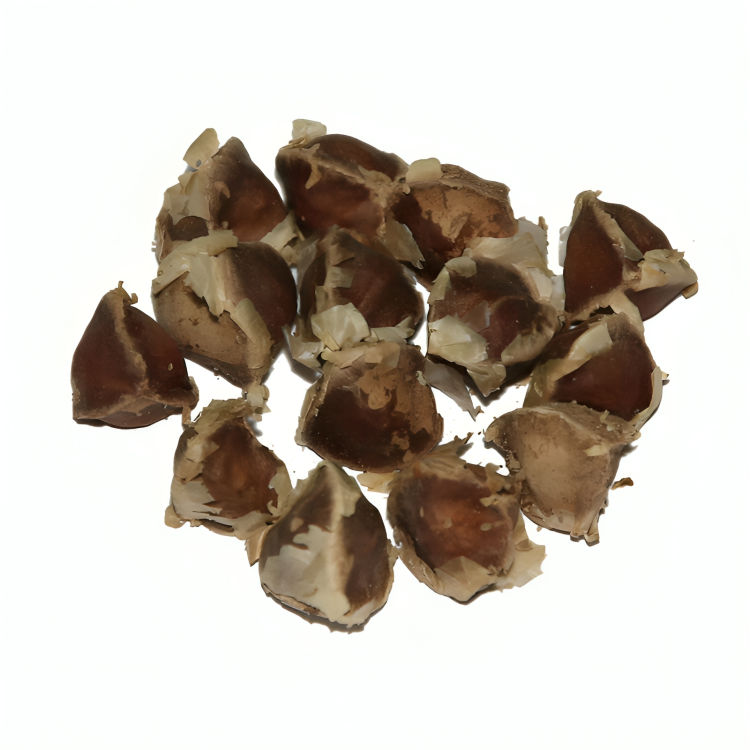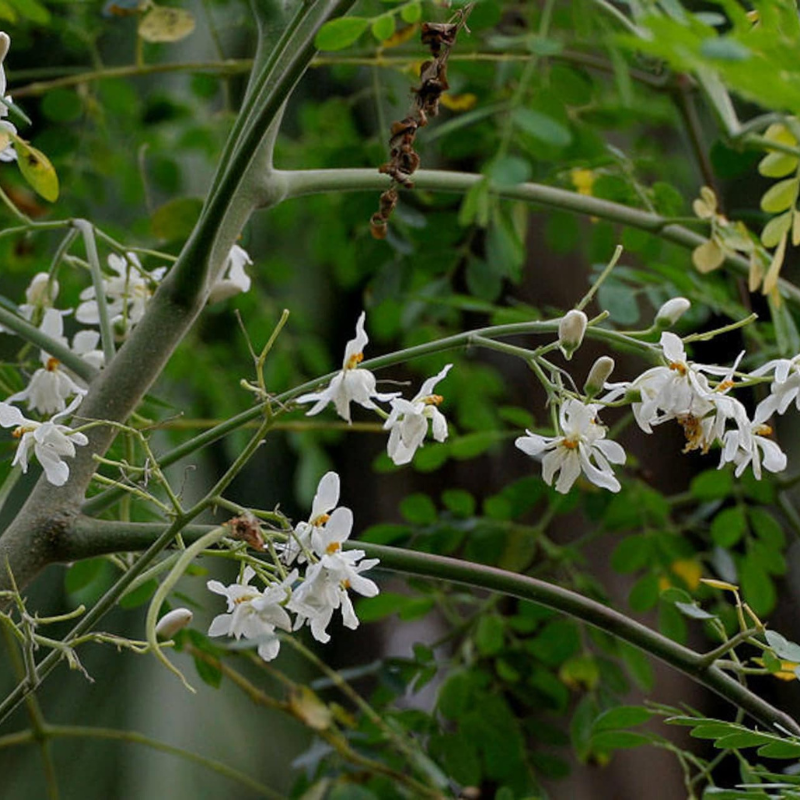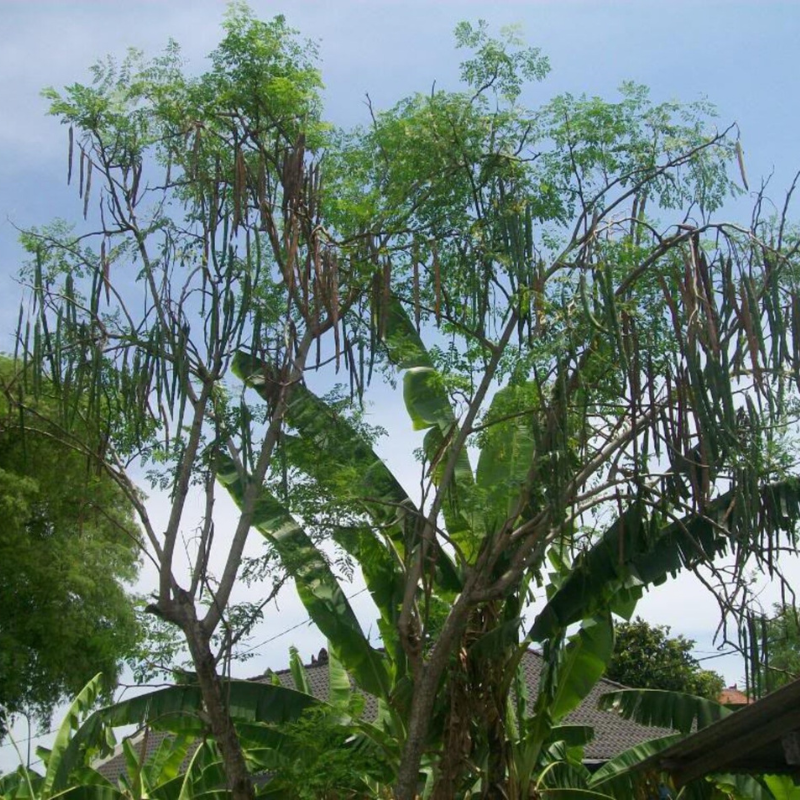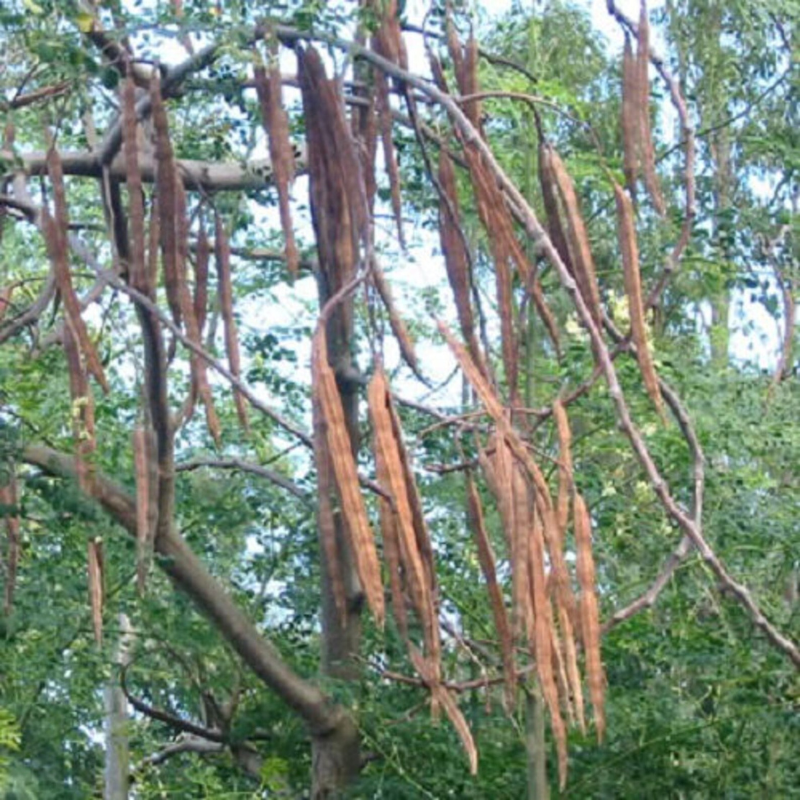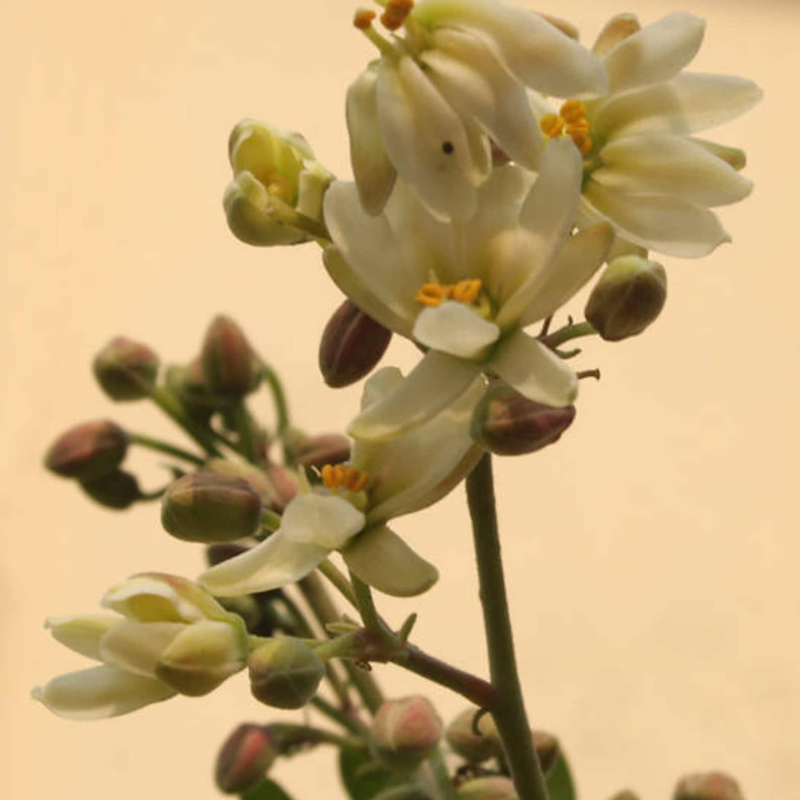- Historical context: The drumstick tree, also known as Moringa oleifera, has been cultivated for thousands of years for its nutritional, medicinal, and agricultural benefits.
- Geographical origination: Native to the Indian subcontinent, the drumstick tree is now grown in tropical and subtropical regions worldwide.
- Relevant cultural significance: Highly valued in traditional Indian medicine (Ayurveda), the drumstick tree is also a staple in South Asian cuisine.
- Time period of discovery: Ancient times, with references dating back to 2000 BC in Indian texts.
- Original habitat: Sub-Himalayan tracts of Northern India, thriving in semi-arid, tropical, and subtropical climates.
- Notable historical uses: Used for its nutritional leaves, pods, and seeds, as well as for water purification and traditional medicine.
- Ideal temperature range: 25-35°C (77-95°F), though it can tolerate higher temperatures.
- Soil type: Well-drained sandy or loamy soil, with a pH range of 6.3 to 7.0.
- Sunlight requirements: Full sun exposure, requiring at least 6 hours of direct sunlight daily.
- Watering needs: Moderate watering, with well-drained soil to prevent waterlogging.
- Planting season: Best planted at the beginning of the rainy season, though it can be planted year-round in tropical climates.
- Germination time: 7-14 days, depending on conditions.
- Growth cycle duration: Fast-growing tree, reaching maturity in 8 months to a year.
- Common pests and diseases: Susceptible to aphids, caterpillars, and fungal diseases, such as root rot and powdery mildew.
- Companion planting advice: Grows well with legumes, which can help fix nitrogen in the soil.
- Common challenges and solutions: Challenges include waterlogging and pest infestations. Ensure proper drainage and use organic pest control methods.
- Nutritional values: Rich in vitamins A, C, and E, as well as calcium, potassium, and protein.
- Health benefits: Known for its anti-inflammatory, antioxidant, and antimicrobial properties. It supports immune function, reduces blood sugar levels, and improves heart health.
- Culinary uses: Leaves, pods, and seeds are edible. Commonly used in soups, curries, and salads. The seeds can be pressed for oil.
- Medicinal uses: Used in traditional medicine to treat a variety of ailments, including digestive issues, skin conditions, and respiratory problems.
- Other unique advantages: Seeds can be used for water purification, and the tree is also used for soil erosion control and as a natural pesticide.
